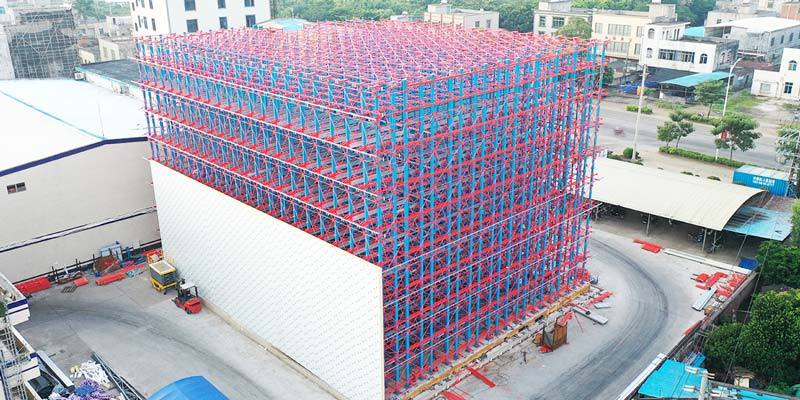Fabricant professionnel d'espaces de stockage
Comment les étagères sont-elles classées selon différents critères ?
Mots clés :
Date de publication :
2025-08-14
In the modern warehousing and retail industries, shelves serve as core storage equipment and are classified in various ways to meet the cargo management needs of different scenarios. The following is a detailed classification based on load-bearing capacity, height, form, development form, and special functions to help companies optimize space utilization and improve operational efficiency.
I. Classification by Load Capacity
1. Light-duty Shelves
- Features: Plug-in combined structure, no bolts required for fixing, the height of the laminate can be adjusted every 50mm, and the maximum load of a single layer is about 150–250kg. Suitable for storing light and small items such as electronic components and stationery.
- Application scenarios: convenience stores, pharmacies, or offices with low load-bearing requirements.
2. Medium-duty Shelves
- Advantages: The combination of beams and laminates supports a load of 300–500kg, and the structure is flexible and easy to disassemble. Widely used in supermarkets and small and medium-sized enterprise warehouses. For example, shopping mall display racks often use this design to balance aesthetics and practicality.
3. Heavy-duty Shelves
- Performance parameters: A single layer can carry 1–3 tons of goods and is mostly used for pallet stacking or large mechanical equipment storage. It is made of high-quality cold-rolled steel plates and is equipped with locking nails to prevent displacement during forklift operations, making it suitable for high-load requirements in the manufacturing industry and logistics centers.

II. Classification by Height
1. Low-level Shelves (<5 meters)
- Easy for manual access, commonly found in retail store back-end warehouses or manual sorting areas.
2. Medium-low to High-level (5–12 meters)
- Requires the use of lifting equipment such as stackers for operation and is the mainstream choice for automated three-dimensional warehouses, especially suitable for high-density storage environments.
3. Ultra-high-level Shelves (>12 meters)
- Usually spliced from multiple sections of columns, relying on stackers to achieve automated access, mostly found in large cold chain logistics centers or strategic material reserve warehouses.
III. Innovation in Form and Structure
1. Aisle Shelves
- Includes two variants: drive-in and through-type. The former allows forklifts to directly drive into the cargo lane to store large quantities of goods; the latter improves space utilization by eliminating the lane design, but attention should be paid to the safety of blind spots.
2. Gravity Shelves
- Use the slope of the track to make the goods slide by their own weight, realizing the "first-in, first-out" circulation mode. It is especially suitable for industries with shelf life control requirements such as fresh food, which can effectively reduce unsalable losses.
3. Cantilever Shelves
- The unique cantilever design can accommodate long materials such as steel pipes and profiles, and the single- and double-sided configurations further expand the adaptation range of irregular items, significantly improving the utilization rate of the vertical space in the warehouse.
4. Rotary Shelves
- Divided into horizontal and vertical rotation types, the target cargo space is delivered to the picking port through mechanical rotation, which greatly shortens the walking path and is suitable for rapid retrieval of high-frequency small items.
5. Attic Shelves
- Build a multi-layer steel platform to form a three-dimensional storage area, and connect the floors with elevators or conveyor belts to double the SKU capacity in a limited space, which is often used in auto parts warehouses.
IV. Evolution by Development Form
1. Traditional Shelves
- Including basic styles such as shelves and drawer cabinets, the technology is mature and the cost is low, and it is still widely used in ordinary warehouses.
2. New Smart Shelves
- Shuttle shelves integrated with IoT technology support remote control, and RFID tags are used to achieve accurate inventory management; electric mobile shelves dynamically adjust the layout through the track system to adapt to flexible production needs.
V. Subdivide by Applicable Scenarios
1. Supermarket Shelves
- Focus on display effects and customer interaction experience, commonly found in convenience stores and shopping centers.
2. Special Shelves for Warehousing
- Functionality-oriented, such as narrow aisle shelves that balance storage density and equipment compatibility, while pallet shelves standardize unitized loading and unloading processes.
3. Special Environment Shelves
- Including anti-freeze material structures for cold storage and special types for automated cold storage to ensure stability under extreme conditions.
VI. Other Key Classification Dimensions
1. Installation Method
- Fixed (such as shelf type) vs. mobile (electrically controlled drive saves channel space).
2. Material Technology
- From economical steel-wood mix to high-strength all-steel structure, to meet different budgets and durability needs.
3. Degree of Closure
- Open type is easy to ventilate and dissipate heat, while closed type provides dust protection and is suitable for the storage of precision instruments.
Summary
Choosing the right type of shelving requires a comprehensive consideration of factors such as the characteristics of the goods (weight/size), frequency of access, space constraints, and budget. For example, high-frequency turnover goods are suitable for gravity shelves to improve efficiency; special-shaped materials should be given priority to cantilever structures. Through scientific classification and matching, enterprises can not only maximize storage efficiency, but also reduce long-term operating costs.
Produits phares
Articles connexes

